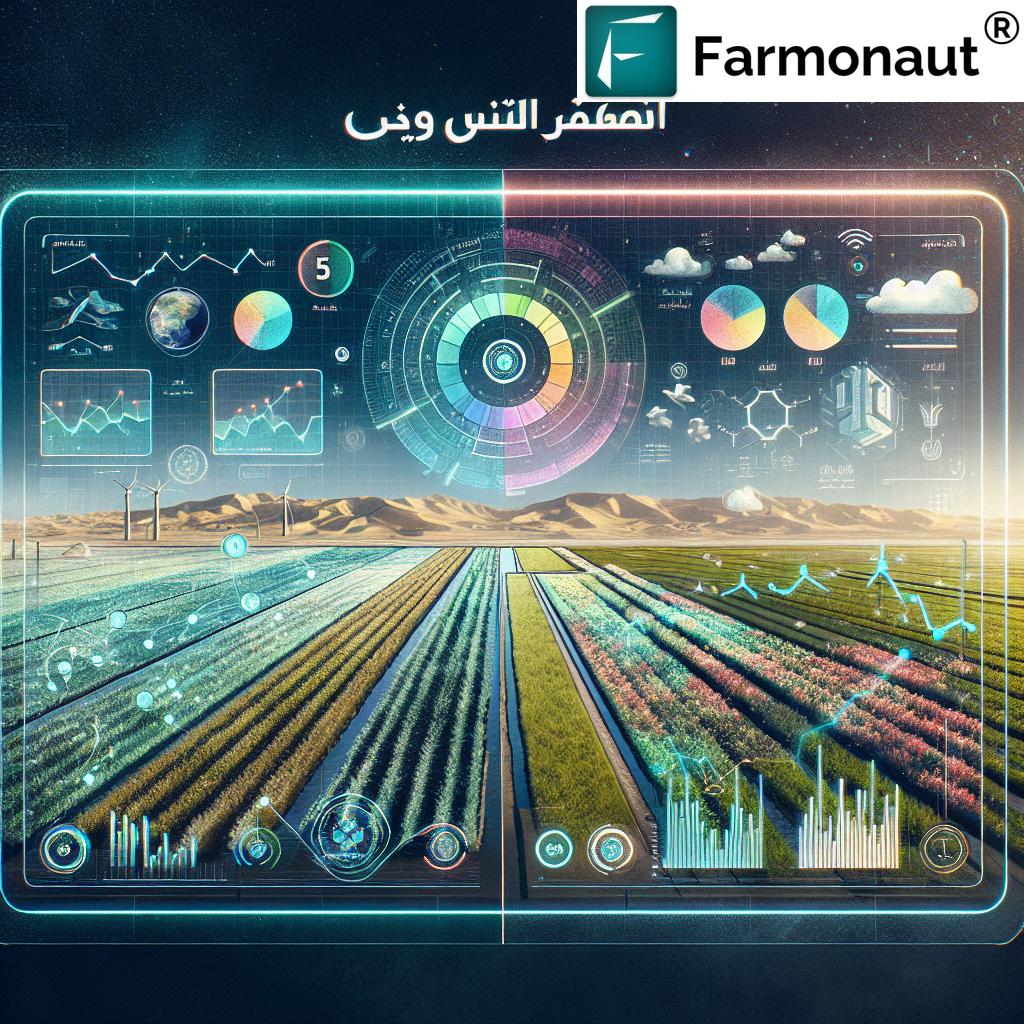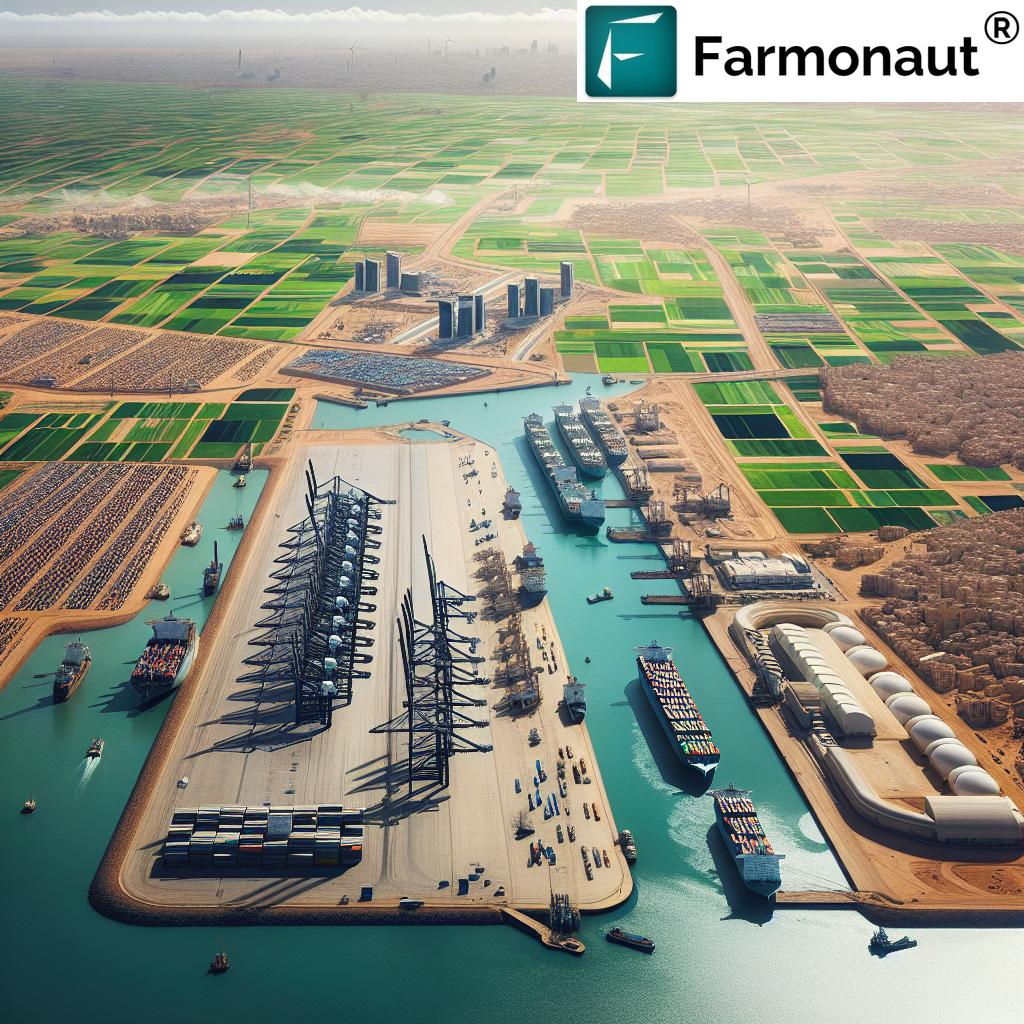7 Key Steps to Secure Federal Capital Territory Development Funds
“Over ₦200 billion was allocated to Federal Capital Territory development funds in 2023, supporting major infrastructure projects.”
Introduction: The Federal Capital Territory Development Landscape
In Nigeria’s dynamic and evolving development ecosystem, the Federal Capital Territory (FCT) stands at the heart of policy innovation, infrastructure excellence, and economic diversification. As the seat of power and a symbol of national unity, Abuja and the FCT are constantly in focus for both federal government budget allocation and development initiatives. But securing sufficient funds for impactful projects—especially in sectors such as agriculture, dam construction, solid minerals, and tourism—requires a deep understanding of fiscal policy, resource allocation, and modern approaches to project funding.
This comprehensive post presents the 7 key steps to secure Federal Capital Territory development funds, focusing on the procedures required to access the Natural Resources Development Fund (NRDF)—a vital instrument designed to support economic diversification through strategic investments in the FCT. We’ll explore the revenue allocation process governed by the Revenue Mobilization Allocation and Fiscal Commission (RMAFC), delve into the intricacies of project funding approval for dam and infrastructure development, and discuss innovative, tech-driven solutions reshaping Nigeria’s development agenda.
Understanding the FCT Fiscal Structure: The Foundation of Development
At the core of federal capital territory development is a unique governance and fiscal environment. The FCT operates under direct federal administration, with its budget and project funding closely aligned with federal revenue allocation mechanisms.
- Three-Tiered Government Framework: The FCT interacts directly with federal authorities, especially for special funds and major infrastructure projects.
- Federation Account and Allocation: The Revenue Mobilization Allocation and Fiscal Commission (RMAFC) governs the disbursement of revenues from the Federation Account, including statutory allocations and funds dedicated to special development purposes.
- Special Fund Establishment: The Development of Natural Resources Fund is established under the Revenue Allocation (Federation Account, etc) Act CAP A15 LFN, 2004, specifically allocating a certain percentage of federal revenue to support economic diversification.
- Budgetary Approvals: All major capital projects and innovative funding requests—including those for dam construction, irrigation systems, market modernization, and agricultural mechanization—must align with national priorities and secure approval through a detailed, multi-step process.
Demystifying the Revenue Allocation Process in the FCT
Securing Federal Capital Territory development funds is intimately tied to the federal revenue allocation process. Let’s break down the critical stages:
- Collection and Pooling of Federal Revenues: All Nigerian revenues—oil, non-oil, and special taxes—flow into the Federation Account.
- Percentage Allocations to Special Funds: Per the Act CAP A15 LFN, 2004, a fixed percentage (notably 1.68% for the Development of Natural Resources Fund) is allocated monthly on a first-line charge basis.
- Trust-Based Administrative Handling: These funds are held in trust, eventually earmarked for qualifying projects from federal, state, and local governments, as well as special agencies like the FCT.
- Formal Application and Assessment: Entities seeking access—such as the FCT Administration or FCT-IRS—must submit a formal, detailed request/presentation to the Fiscal, Efficiency and Budget Committee of the RMAFC.
- Physical Assessment & Verification: Upon receipt, the Committee arranges a field verification, directly inspecting and certifying the viability of the proposed initiatives (e.g., dam rehabilitation, market modernization, mechanization centers).
- Committee Deliberation & Reporting: Post-assessment, a report with recommendations is drafted for appropriate funding levels and submitted to the RMAFC and, ultimately, the President of Nigeria for final approval.
Understanding and maneuvering this process is crucial for any team, agency, or entity striving to secure funding for transformative projects in Abuja and across the FCT. Familiarity with these procedures ensures our requests align with the standards demanded by the Committee and the Commission.
“Nigeria’s dam projects received a 15% increase in federal funding last year, boosting economic diversification efforts.”
Comparative Funding Sources Table: Federal Allocation vs. Innovative Models
To accelerate federal capital territory development—especially large-scale dam projects driving economic diversification—it’s vital to compare traditional and emerging funding avenues. The following table outlines key differences:
| Funding Source | Estimated Annual Funding Amount (₦ Billion) | Allocation Process | Application Timeline (Months) | Economic Impact Potential |
|---|---|---|---|---|
| Federal Government Allocation via RMAFC | 80–150 | Statutory revenue sharing; formal request, verification, presidential approval. | 3–6 | High |
| Natural Resources Development Fund (NRDF) | 30–50 | Committee vetting, physical assessment, report & recommendation, presidential sign-off. | 4–8 | Medium–High |
| Public-Private Partnership (PPP) | 40–120 | MOU negotiation, feasibility, investment agreements, government guarantee. | 6–12 | High |
| International Grants/Development Loans | 15–40 | Proposal, technical/economic validation, donor oversight, compliance reporting. | 6–24 | Medium–High |
| Bond Issuance | 50–200 | Legislative approval, market offering, investor purchase, regulated use of proceeds. | 9–18 | High |
This comparative approach ensures that we leverage both conventional and innovative mechanisms—like resource and fleet management tools and sustainability tracking—to maximize funding success, project scale, and economic returns.
The Strategic Role of the Natural Resources Development Fund (NRDF)
The Natural Resources Development Fund is central to modern federal capital territory development efforts. Managed under the guidance of the RMAFC and its Fiscal, Efficiency and Budget Committee, the NRDF channels federal allocations into essential projects in:
- Agricultural mechanization and irrigation (dam construction, solar-powered irrigation systems)
- Solid minerals sector investment and exploration
- Modernization of grains, cattle, and livestock markets
- Tourism development initiatives
Access to the NRDF stands as a prerequisite for ambitious economic diversification strategies. As outlined by the Committee, only entities following rigorous procedures—formal presentations, physical assessments, and proposal validation—will qualify, ensuring funds are utilized judiciously and projects align with the FCT’s strategic vision.
7 Key Steps to Secure Federal Capital Territory Development Funds
Let us break down the comprehensive process for accessing vital FCT development funds, focusing on the formal pathway to the NRDF:
-
1. Preparation and Submission of a Comprehensive Funding Request
The first essential step is preparing a detailed, evidence-backed funding request. For the FCT, this involves:
- Assessing development priorities aligned with economic diversification—such as agricultural dam projects, solid minerals, and market modernization.
- Highlighting the socio-economic advantages of proposed projects across agriculture, dam infrastructure, and tourism.
- Ensuring the proposal meets all Commission requirements for transparency, fiscal efficiency, and outcome focus.
The funding request is formally addressed to the Fiscal, Efficiency and Budget Committee of the RMAFC, signed by authorized FCT representatives, and includes technical, financial, and environmental documentation.
-
2. Delegation Presentation to the RMAFC Fiscal Committee
Following submission, an official delegation—for instance, led by the FCT-IRS Acting Chairman or similar authority—must present the project’s merits directly to the Committee. The presentation covers:
- Objectives and expected outcomes of each proposed project (e.g., construction and rehabilitation of Lower Usuma Dam, Kilankwa Dam, and irrigation schemes).
- Implementation strategy, anticipated timelines, project teams, and compliance assurance.
- Alignment with the Renewed Hope Agenda and national development frameworks.
This interactive session enables Committee members to probe strategic, fiscal, and technical aspects, ensuring every detail aligns with federal development goals.
-
3. Thorough Physical Assessment and Site Inspection
Before funds can be approved, the Fiscal, Efficiency and Budget Committee schedules an in-person assessment at the FCT site(s):
- On-site verification of proposed dam locations, mechanization centers, and project readiness.
- Collection of data to certify the viability of the issues raised during the presentation—ensuring the projects can succeed if funds are released.
- Identification of potential risks, resource requirements, and environmental or community impact factors.
The hands-on inspection phase demonstrates the FCT’s commitment to fiscal responsibility and judicious use of government funds.
-
4. Assessment Report and Recommendations by the Committee
Following the physical visit, the Committee prepares a detailed assessment report:
- Evaluates the project’s technical, financial, and social feasibility.
- Makes funding allocation recommendations specific to each proposed initiative.
- Ensures recommendations are consistent with the objectives of the Development of Natural Resources Fund as set out in the Act CAP A15 LFN, 2004.
The report is critical in demonstrating that federal resources will be invested prudently, supporting measurable impact in Abuja and the wider territory.
-
5. Endorsement and Transmission to the President/Commander-in-Chief
With Committee vetting complete, the validated recommendations are submitted to the President and Commander-in-Chief for consideration and final approval. At this stage:
- The President reviews the Committee’s analysis, project priority, and anticipated national benefits.
- Upon Presidential approval, official communication is sent back to RMAFC and the FCT team, green-lighting disbursement of funds for the approved projects.
-
6. Transparent Disbursement and Project Implementation
Funds are released in tranches, with each disbursement closely monitored:
- The FCT administration is accountable for utilizing funds strictly as appropriated for the specified dam projects, agricultural support, and infrastructure upgrades.
- Regular updates are furnished to the Committee and Commission members, tracking progress and compliance—promoting a culture of fiscal responsibility.
-
7. Monitoring, Evaluation, and Reporting—Ensuring Continuous Improvement
Post-disbursement:
- The RMAFC and its Committees implement robust follow-up, including on-site monitoring and performance reporting.
- Every funding cycle incorporates lessons learned, best practices, and recommendations for improving the next round of proposals—advancing project funding approval process standards in Nigeria as a whole.
By adhering to these structured steps, teams and agencies maximize their chances of accessing transformative funds for dam construction, irrigation, and economic diversification in the FCT.
Innovative Approaches for Funding Dam Projects in FCT
Traditional government allocations remain foundational, but new approaches are increasingly vital to bridge funding gaps and support ambitious projects:
- Blending Funds from Multiple Sources: Combining federal allocations (RMAFC, NRDF) with PPP investment, international grants, and debt finance (bond issuance) enables larger-scale, sustainable projects—especially for multi-use dams supporting both agriculture and urban water supply.
- Leveraging Modern Technology and Data-Driven Insights: Access to real-time analytics and satellite monitoring—like that provided by large-scale farm management platforms—streamlines application, verification, and monitoring processes for project funding, increasing transparency and efficiency.
- Incorporating Sustainability Criteria: These days, funding proposals that embed carbon footprinting and clear traceability solutions (particularly for the agriculture and solid minerals sectors) are viewed more favorably, attracting more diverse funding sources.
Leveraging Technology for Fiscal Efficiency in Government Funding
Digital tools are revolutionizing the practice of fiscal efficiency in government funding and project funding approval processes:
-
Real-Time Project Monitoring: Platforms such as Farmonaut offer satellite-based crop health, soil moisture, and land use monitoring, providing project managers and government entities with actionable insights for dam and irrigation management.
These data-driven insights can be used to furnish evidence for funding requests, verify on-ground outcomes, and streamline evaluation by Committees. - Blockchain-Based Traceability: Transparent, end-to-end tracking of project implementation and resource usage with blockchain enhances trust with both government and donor agencies, aligning with best practices in project traceability.
- Automated Compliance Reporting: Automated systems ensure regular, structured reporting to the RMAFC and relevant Committees—increasing fiscal responsibility and demonstrating accountability through the project lifecycle.
Moreover, integrating tools such as Farmonaut’s satellite API and developer documentation provides custom data delivery for large-scale dam projects and support agencies.
How Farmonaut Tools Support Economic Diversification Strategies
Modern funding and project execution in the Federal Capital Territory demands more than paperwork—technology is a force multiplier and compliance accelerator. Farmonaut brings value to federal, state, and local government entities as follows:
- Satellite-Based Crop & Land Health Monitoring: Our platform delivers regular, high-resolution imagery for early warning on irrigation deficits and crop health anomalies. This enables FCT agencies to present compelling, data-driven requests for further government funding or to validate previous disbursements.
- AI-Driven Advisory & Resource Allocation: Real-time recommendations on irrigation, pest management, and infrastructure optimization drive fiscal efficiency in new dam and irrigation deployments, directly supporting economic diversification efforts.
- Blockchain-Backed Traceability: Ensuring transparency from resource allocation to the market or consumer—especially for agricultural produce and solid minerals—complements requirements of the Development of Natural Resources Fund.
- Fleet & Supply Chain Management: Fleet management solutions optimize logistics for both government field teams and private sector partners, reducing operational expenses for all project tiers.
- Access to Crop Loans & Insurance: Agencies supporting FCT farmers can utilize satellite-based verification services to enhance farmer access to finance and insurance, increasing the resilience of public and private sector investments.
By embedding advanced, scalable, and affordable technology into funding processes, we ensure accountability, efficiency, and impact from initial request to project delivery in Abuja and beyond.
Ready to transform your FCT project management and unlock new funding opportunities? Access the Farmonaut platform via web, Android, or iOS for real-time support.
Conclusion
The drive for Federal Capital Territory development is more compelling—and more complex—than ever. By understanding the nuances of revenue allocation, harnessing the power of Natural Resources Development Fund access, and leveraging technology for fiscal efficiency in government funding, we are empowered to implement transformative dam, agriculture, and economic diversification projects across Abuja and Nigeria at large.
For success, our approach must be strategic, transparent, and repeatedly data-driven, ensuring that the capital territory remains at the forefront of Nigeria’s development agenda while supporting the livelihoods and futures of all its residents.
Frequently Asked Questions (FAQ)
What is the process to access funds from the Development of Natural Resources Fund (NRDF)?
Our entity must prepare a formal funding request, make a presentation before the Fiscal, Efficiency and Budget Committee of the RMAFC, undergo a physical assessment, await the Committee’s report and recommendation, and then receive final approval from the President.
Which sectors are prioritized in the FCT for development funds?
Sectors prioritized include dam construction and rehabilitation, agriculture (including mechanization and irrigation), solid minerals, and tourism development, in alignment with economic diversification strategies.
How important is physical assessment in the fund allocation process?
It is critical; the Committee visits project sites to certify the viability and necessity of each proposed initiative. This ensures funding is only approved for actionable, impactful projects.
How can technology increase the chances of successful fund allocation for FCT dam or agriculture projects?
Technology—such as satellite monitoring, blockchain for traceability, and fleet management tools—increases data transparency, supports evidence-based presentations, and simplifies monitoring, thus accelerating approvals and boosting project credibility.
Are there alternative funding sources for major capital territory projects aside from NRDF and statutory federal allocations?
Yes, major FCT projects can also pursue Public-Private Partnerships, international grants, development loans, and bond issuance. These alternatives can significantly boost funding scale and sustainability for large infrastructure or economic diversification projects.
For more information on precision agriculture, satellite monitoring, and government project management tools, explore our product pages, including large-scale farm management and carbon footprinting and sustainability tracking.

















